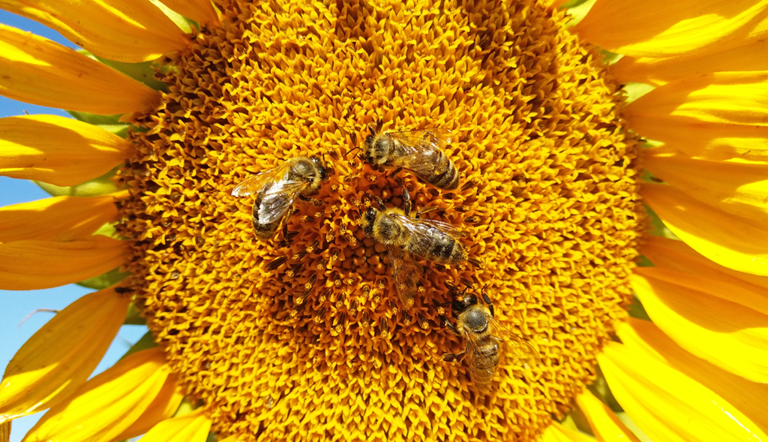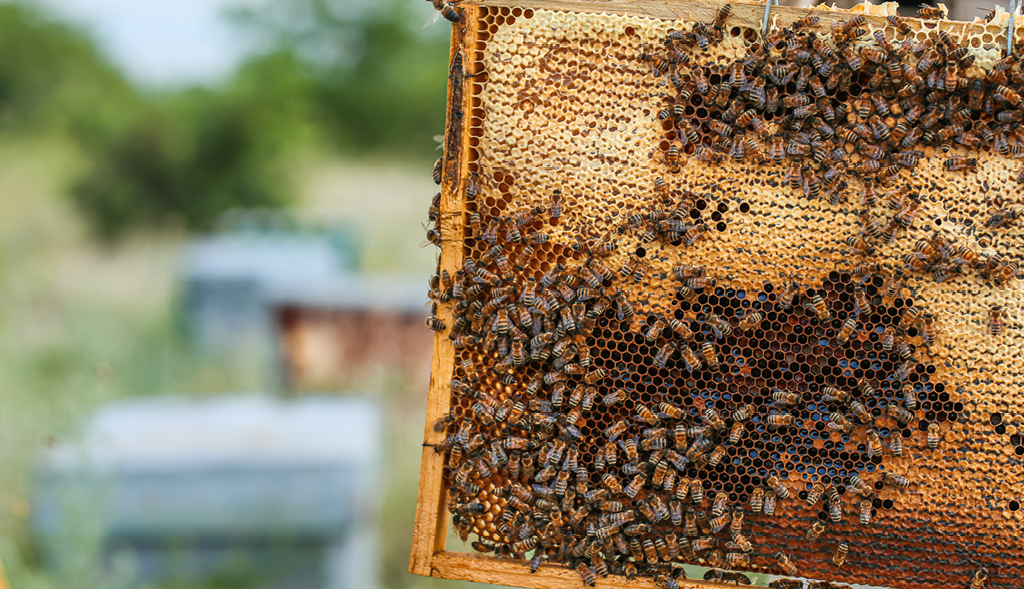
Protecting beneficial insects

Crop protection and beneficial insects
In mid-2022, it was estimated that 91 000 bee hives were required to serve the deciduous fruit industry in the Western Cape. According to the Western Cape Government, “More than 50 different crops in South Africa are reliant on the existence and work of the honey bee. Thanks to these busy workers, we can produce apples, pears, citrus, and other fruits that make up a major export market. The survival of the honey bee and South Africa’s R7 billion a year fruit industry has come under threat.
“The decline in pollinators is a result of many environmental challenges, such as the change in habitat, loss of floral resources, pesticides, pests, diseases, and the growing effects of climate change.”
Insects are an essential part of the agricultural cycle, helping to fertilise crops, control pests and pollinate plants. From bees to ladybirds, dung beetles to wasps, they are responsible for much of the biodiversity and sustainability of our agricultural systems.
At the forefront of these beneficial insects are bees. They are one of the most efficient pollinators in nature and play a vital role for South African crops.
Unfortunately, the indiscriminate use of chemicals can lead to a decline in the number of beneficial insects. Farmers need to be aware of the impact of their actions and, where possible, incorporate sustainable alternatives into their crop protection programme.
How to protect beneficial insects and your crop
In South Africa, many farmers rely on a healthy bee population to ensure their harvests are bountiful. As such, it’s important that bees, and other beneficial insects, are protected in order to ensure that crops thrive.
Farmers can take the following steps to ensure their beneficial insects remain protected:
- Protective nets, companion planting and cultural techniques can go a long way to naturally support beneficial insects and lessen the need for chemicals.
- Agritech innovations can help pinpoint pests and diseases so that when chemicals are needed, they are used only on the diseased or infested section of the crop.
- Do your research. Companies like ADAMA South Africa include specific solutions that are safe for bees/beneficial organisms in their range of crop protection formulations. Seeking out these products means that farmers can rest assured that their crop is being protected without eradicating their beneficial insect populations.
- When you have to use chemicals, make sure you follow the label instructions – incorrectly mixed pesticides play a role in poisoning and killing bees – and try to apply when bees are not active around the crop (eg early evening).
CropLife South Africa notes that “In South Africa, pesticides can only be registered after a rigorous review of the product’s toxicology, which includes the review and approval of comprehensive efficacy, residue, stability and plant compatibility studies that need to be submitted. Furthermore, the label-directed use of the product should not pose an unacceptable risk to human and environmental health, which includes pollinator safety.
“It is important to note that even though a pesticide may be toxic to bees when ingested, it does not mean that it cannot be applied safely… Most pesticides [when mixed correctly and used correctly] pose very little risk to bees once the spray is dried off on the plant surface… This means that the crop adviser and the farmer must ensure the products are only used according to label instructions.
“Any other application is not only illegal, but could have dire consequences for pollinators.”
ADAMA’S solutions
Klartan® 240 EW is a fast acting pyrethroid insecticide that controls difficult pests, such as thrips, aphids, Lepidoptera pests, American bollworm and stinkbugs. It provides good residual control of target pests after application and is stable across a wide range of climatological conditions. Klartan® 240 EW is effective at low dose rates and has low toxicity to bees and predatory insects - in some countries it is even registered to control mites in beehives. It is therefore suited to IPM practices.
It can be used on the following crops for control of these pests:
| Canola | Aphids (Brevicoryne brassicae), American bollworm (Helicoverpa armigera) |
| Wheat | Brown wheatear aphid (Sitobion avenae) – Western Cape only |
| Citrus | Thrips (Scirtothrips aurantii) |
| Macadamia | Stinkbug (Pentatomidae spp) – Mpumalanga only |
Warlock® 19.2 EC insecticide can be used in an IPM programme as the specific pest is targeted and the active ingredient breaks down quickly on the plant surface, causing minimal disruption to beneficial insects. It effectively controls Lepidoptera larvae, including those resistant to organophosphate, pyrethroids and insect growth regulators. Warlock® 19.2 EC provides excellent control of phytosanitary pests, even in large pest pressure situations, killing targeted pests via contact and ingestion. Direct contact with bees when applying Warlock® 19.2 EC should be avoided (by doing the application in the evening or early morning for instance), but bees can be re-introduced shortly after the application was made.
| Barley, wheat | African bollworm (Helicoverpa armigera) |
| Canola | African bollworm (Helicoverpa armigera) |
| Citrus | False codling moth (Thaumatotibia leucotreta), African bollworm (Helicoverpa armigera) |
| Maize, sweetcorn | Fall armyworm (Spodoptera frugiperda) |
CropLife’s Pollinator Safety
Don’t forget your soil
Soil health is just as important as pollinators. And the most common and destructive nematode pathogen in the world unfortunately co-exists with the beneficial organisms in soil, making them difficult to control. Until now. ADAMA’s Nimitz® offers exceptional control of key nematode pests in potato, tomato, baby marrow, butternut squash, melon, muskmelon and pumpkin crops. It is also unique among nematicides in that it targets only plant-parasitic nematodes without disrupting the balance of the soil ecosystem.




